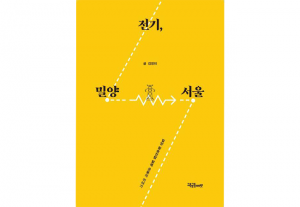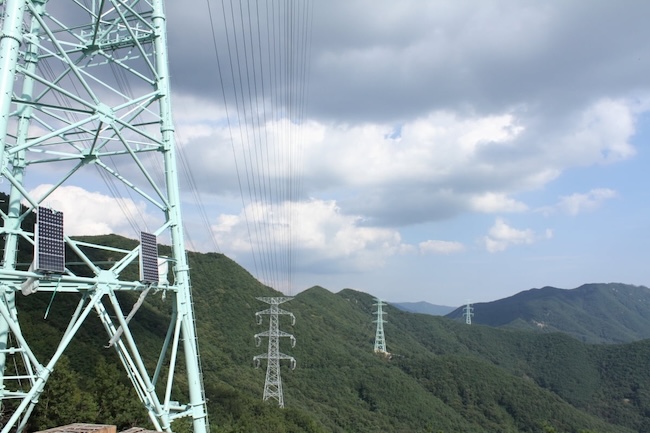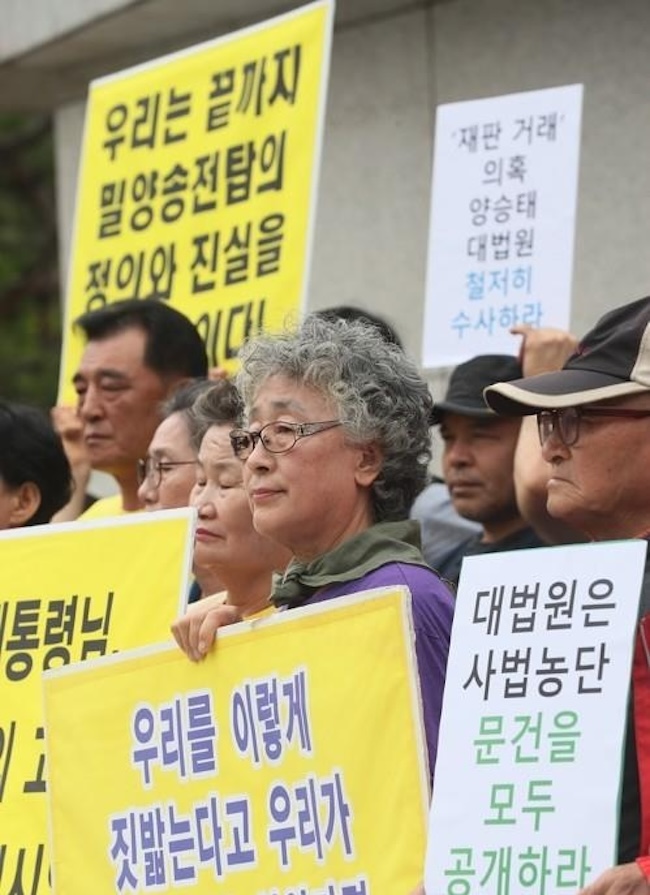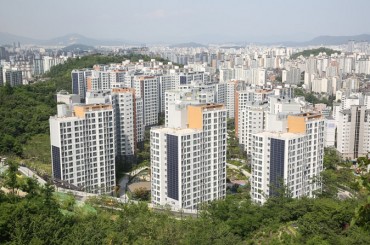
“Electricity, Miryang-Seoul,” delves into the oral histories of the Miryang residents. (Image courtesy of Commune But)
SEOUL, Jan. 26 (Korea Bizwire) — In the quiet town of Miryang, South Korea, a determined group of elderly women, colloquially known as the “Miryang Grandmothers,” have become synonymous with a relentless campaign against the construction of power transmission towers.
This year marks the 19th anniversary of their struggle, which began in 2005 when the government decided to build a high-voltage transmission line to convey electricity generated by the Shin-Kori Nuclear Power Plant in Ulsan to the Yeongnam region, passing through Miryang.
The conflict gained momentum in 2012 following the tragic death of a local resident, Lee Chi-woo, who self-immolated in a desperate bid for the residents’ fierce opposition to the construction of the towers to be heard.
His passing transformed the local opposition into a national anti-nuclear and anti-transmission tower movement. Despite facing stern government action, including the forcible removal of opposition camps in June 2014, the residents of Miryang, particularly in the areas of Sangdong-myeon, Bubuk-myeon, and Sannae-myeon, have steadfastly refused to accept compensation from the Korea Electric Power Corporation (KEPCO), including offers of benefits for their children applying for government jobs, or acknowledge the construction.

“Miryang Grandmothers,” have become synonymous with a relentless campaign against the construction of power transmission towers. (Image courtesy of Yonhap)
The Miryang Grandmothers are not just a symbol of quaint, rural resistance; they represent a powerful force in the anti-nuclear and anti-transmission tower movement, and their influence has extended far beyond Miryang.
These women have played a significant role in various anti-nuclear movements across South Korea, including in Gangwon Province’s Hongcheon County.
A recent book by Professor Kim Young-hee from Yonsei University’s Department of Korean Language and Literature, titled “Electricity, Miryang-Seoul,” delves into the oral histories of the Miryang residents.
Kim’s work, based on interviews conducted between 2014 and 2019, offers an in-depth look at the struggle against the transmission towers and the subsequent transformation into an anti-nuclear movement.
The book critically examines the state’s use of force during the construction process and its impact on the local community, highlighting the emergence of women’s solidarity and their role as anti-transmission tower and anti-nuclear activists.

The Miryang movement is not just about opposing construction projects; it’s a broader call for climate justice and energy equity. (Image courtesy of Yonhap)
The Miryang movement is not just about opposing construction projects; it’s a broader call for climate justice and energy equity. This year, the Miryang 765kV Transmission Tower Opposition Committee announced a nationwide tour starting in July to promote these ideals.
The organization is committed to visiting any location in South Korea that shares its vision for a nuclear-free, transmission tower-free future.
This tour is a continuation of the 18-year-long battle that began in 2005 with the government’s Fifth Long-Term Electricity Supply and Demand Plan, which sanctioned the construction of the transmission towers in Miryang.
The Miryang 765kV Transmission Tower Opposition Committee’s announcement emphasizes its dedication to working with citizens across the country who supported Miryang’s cause and are committed to practicing climate justice through anti-nuclear and anti-transmission tower efforts.
The story of Miryang and its residents is a testament to the power of community and resilience.
Faced with a daunting challenge, these ordinary citizens, led by the spirited Miryang Grandmothers, have not only challenged a significant government project but have also sparked a broader conversation about energy justice and environmental activism in South Korea.
As their struggle enters its 19th year, the Miryang movement stands as a symbol of enduring resistance and the possibility of change, driven by the unwavering spirit of a community united for a cause.
M. H. Lee (mhlee@koreabizwire.com)






